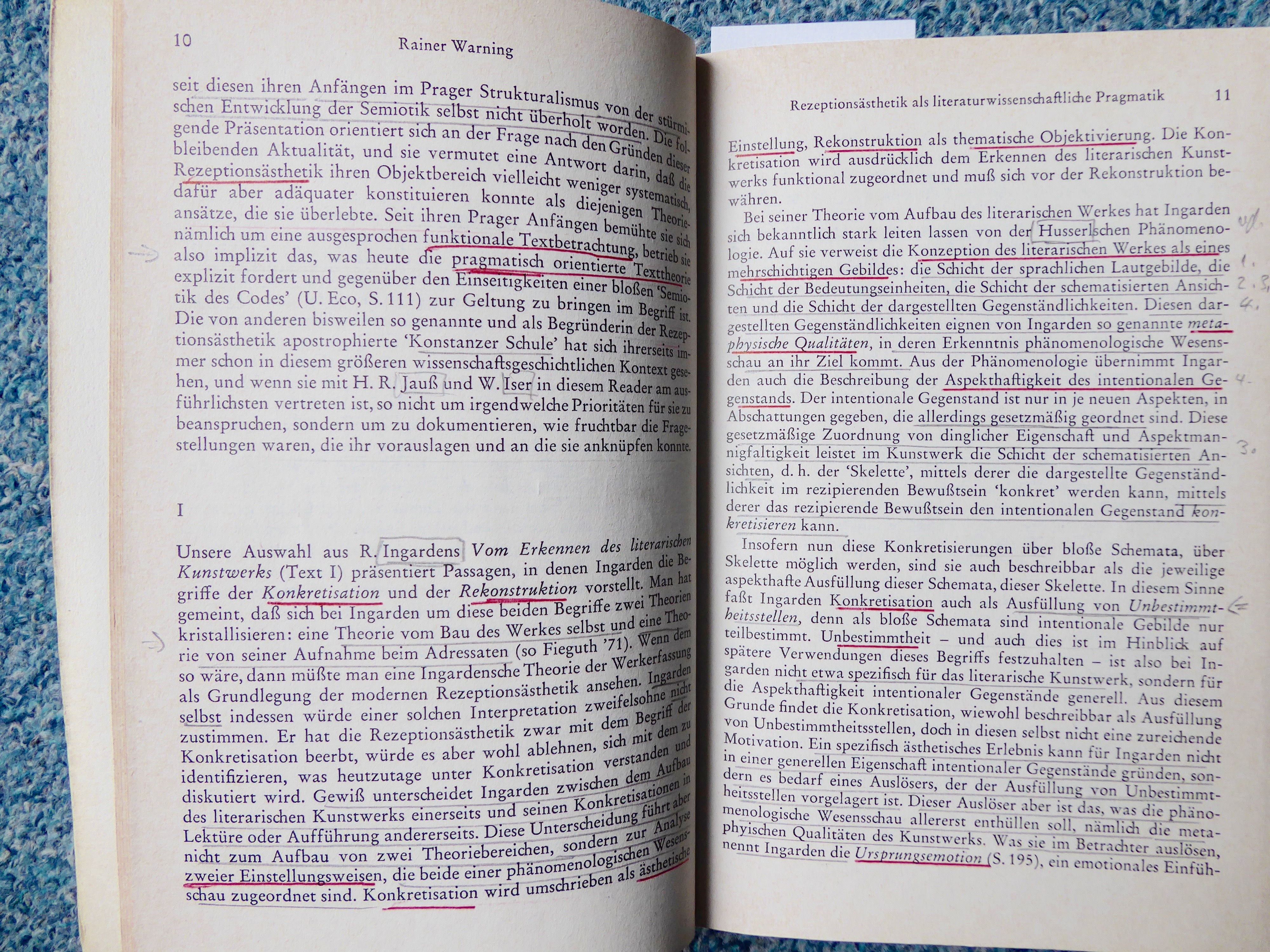
September 28, 2017, by Brigitte Nerlich
Science/climate communication: A view from reception theory
There has been some controversy recently surrounding a paper published in Nature Geoscience on global warming or, if I understand things correctly, about whether there might be a slightly better chance of avoiding it. This paper appears to have been misunderstood, misrepresented and misreported. One Mail Online headline read: “Fear of global warming is exaggerated, say scientists”.
While reading a few blogs and articles about the paper, as well as the authors’ attempts to clarify what they meant to say in the paper, I stumbled across this sentence on the blog ‘…and Then There’s Physics’: “Anyone with even a moderate understanding of the public climate change debate would have seen how this paper was going to be received by some.” (Italics mine)
This made me think. Making science public involves a lot of things, including writing articles, speaking with people, commenting on articles and much more. Much has been written about such communication activities, focusing mainly on the production (writing, talking) and interaction aspects (dialogue, engagement), but much less about what one might call the ‘reception’ (reading, interpreting, understanding) aspect of this process. (There is however stuff out there about tailoring messages to ‘audiences’; and some types of ‘audience studies’ are linked to what follows)
Interestingly, as far as I can make out, nobody seems to have written about science communication from the perspective of ‘reception theory’. Yes, there is such a thing! Although reception theory is buried under mountains of sometimes postmodern/post-structuralist words and concepts, it might be useful to reflect on some of its tenets in the context of science communication in general and climate change communication in particular.
Reception theory
What then is ‘reception theory’? When I was young and studying French literature in the 1970s this was an emerging and, to some, an exciting new field. I plunged right into it. As you can see below, in the 1970s I still ‘read’ books (sometimes to destruction)!
Reception theory basically deals with how people read and interpret texts (or talk, or images); how they create meaning. It has some roots in good old-fashioned hermeneutics. The theory also deals with how authors create a space for such interpretation to happen and how they inscribe their imagined readers into the texts they create.
One of the people I encountered the most when immersing myself in reception theory was Hans Robert Jauss. He is not easy to ‘interpret’ and summarise, so I was glad to find this lively description of him and his work in a blog post: “So Hans Robert Jauss is a little off the critical grid, but if you’re into reception theory—and who isn’t?—he’s your man. In fact, he invented the term ‘reception theory’ way back in the days of polyester slacks and Charlie’s Angels (the real one, with Farrah Fawcett). Plus, he’s on your side—the reader’s, that is. How the reader ‘receives’ a text is a question that really floated this guy’s boat.” (If you read on you’ll find that Jauss also had a dark side)
Horizons of expectations
One of Jauss’s most famous concepts was that of ‘horizons of expectations’. Interpretation always interacts with expectations. These can be the authors’ expectations of how their (expected) reader might understand what they wrote, or the readers’ expectations about how to interpret what they are reading, given their understanding of the author, other texts or images, the genre or style the text is written in, the time they live in, their cultural and political values and identities, and so on.
To put it another way: “’Horizons of Expectation’ simply means that what the reader ’expects’ of the text will change according to the time and place of the reader, so a reader from ancient Rome reading Cicero’s Tusculanae Disputationes (Tusculan Disputations), for example, will have a different experience from today’s undergraduate reading the same text. We can only read books within our own social and cultural contexts.”
In the context of the climate change article, the horizon of expectations is very different for those who read the text from the perspective of mainstream climate science compared to those who oppose the mainstream. I suppose the writers of the article assumed their readers to be the first kind, not the second. That was perhaps not wise.
Ways of reading
This brings me to the cultural theorist Stuart Hall, another stalwart of reception theory. In 1973 he published an essay entitled “Encoding and Decoding in the Television Discourse”.
Hall distinguished between various ways of reading a text or talk: a dominant or ‘hegemonic’ reading of a text, negotiated reading and an oppositional or ‘counter-hegemonic’ reading. A dominant reading of a text is based on the reader and author sharing and accepting a specific preferred interpretation of the text, which is itself based on a shared social situation (and linked to a dominant ideology). In the case of negotiated reading the dominant reading is slightly resisted and the interpretation of the text is inflected and adapted to a different social situation and particular preferences; and, finally, oppositional (or counter-hegemonic) readings are produced by those whose social position puts them into direct conflict with the preferred reading, that is to say, the dominant ideology. Such readers (what some may now call a counterpublic) reject the preferred reading inscribed in the text and use alternative frames of reference and alternative horizons of expectation to interpret the text. This type of oppositional reading happened, and was quite easy to achieve, for the article published in Nature Geoscience.
These concepts overlap somewhat with two notions taken from social representations theory that Rusi Jaspal and I have used in our writings about climate change science and its contestation by so-called ‘sceptics’, namely the difference between a hegemonic representation and a polemical or counter-hegemonic one.
The implied reader
One other idea integral to reception theory came to mind when reading about that misunderstood climate change article, and that was the concept of the ‘implied reader’. This concept was introduced by Wolfgang Iser and refers to “a hypothetical ‘role’ or ‘model’ of someone assumed by the author to share the knowledge necessary in order to fully understand the text, as distinct from any actual readers. The difference between an implied reader and an actual reader is likely to be most apparent in reading works from a period when conventional values were very different”.
In the case of our contemporary but misunderstood climate science article, the authors had a certain implied or model reader in mind for their article, one that shared the authors interests and values, little thinking about actual flesh-and-blood readers out there that might not share their values and might read the text in what Hall had called an oppositional or counter-hegemonic way. The model or implied reader they had in mind would read the phrase ‘climate model’ without running away screaming. The authors should have known that real readers might not match those model readers.
Uses and gratifications
To round off this foray into reception theory, I want to mention one more theory that is sometimes linked to it, namely ‘uses and gratifications theory’. Again, this is quite an old one, established in the 1940s and 50s and revived in the 1970s and 80s.
Like reception theory, uses and gratification theory sees readers or listeners of text and talk as active participants in the creation of meaning, rather than passive consumers. They actively integrate the reading/consumption of media into their own lives. Katz, Blumler, and Gurevitch (1974) provided an overview of the basics of ‘uses and gratifications’ which goes something like this: depending on social and psychological circumstances people have certain needs and expectations which propel them to seek out, read and engage with certain media and content; this, in turn, leads to differential patterns of media exposure, which results in the gratification of the initial needs but also has other consequences, perhaps mostly unintended ones. Unintended consequences can be, I think, biases, polarisation, entrenchment of opinions and prejudices, as well as identity creation and reinforcement.
What can we learn from all this?
One thing is for sure: When writing an article it’s always good to think about your readers and how they might ‘receive’ it; and if you are writing in a controversial field, also think about your wider audience and potential counter-readers. If you know that oppositional or counter-hegemonic reading is likely, try to reduce the scope for this to happen. This does not mean choosing to censor your own research (Anderson, 2015) or suppressing findings, but being aware of how misunderstandings can occur and minimising your readers’ ability to engage in misunderstanding and even misrepresentation rather than understanding. Easier said than done! And, of course, whatever effort a writer makes, a reader might still do something unexpected and unanticipated with a text.
Image: Pixabay
No comments yet, fill out a comment to be the first


Leave a Reply